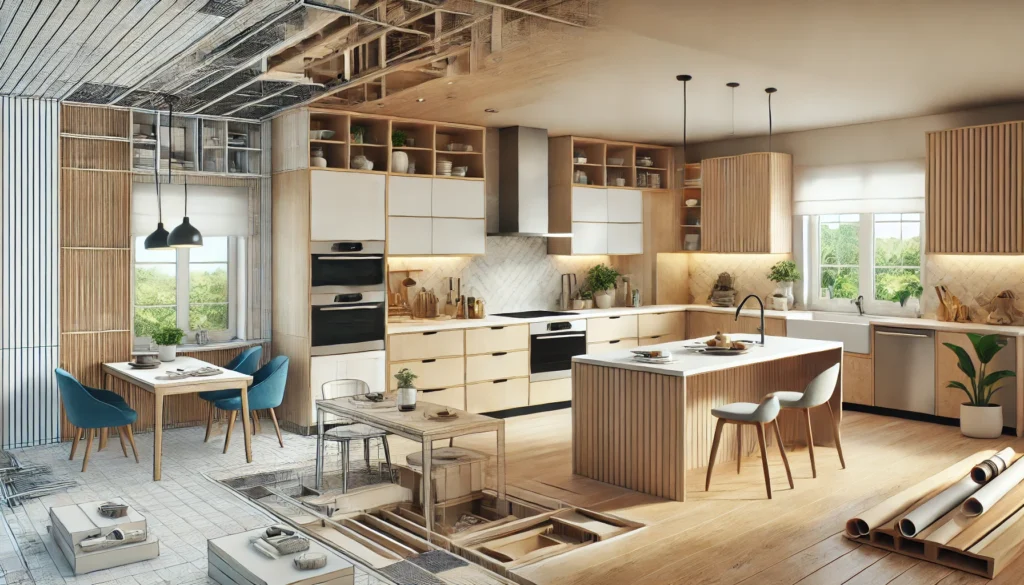Kitchen remodeling is a significant home improvement project that can dramatically enhance the functionality, aesthetics, and value of your home. Whether you’re looking to modernize your kitchen, improve its layout, or increase its efficiency, a well-executed remodel can make your kitchen the heart of your home. This guide will walk you through the essential steps of kitchen remodeling, from planning to execution, ensuring you achieve the kitchen of your dreams.
1. Why Remodel Your Kitchen?
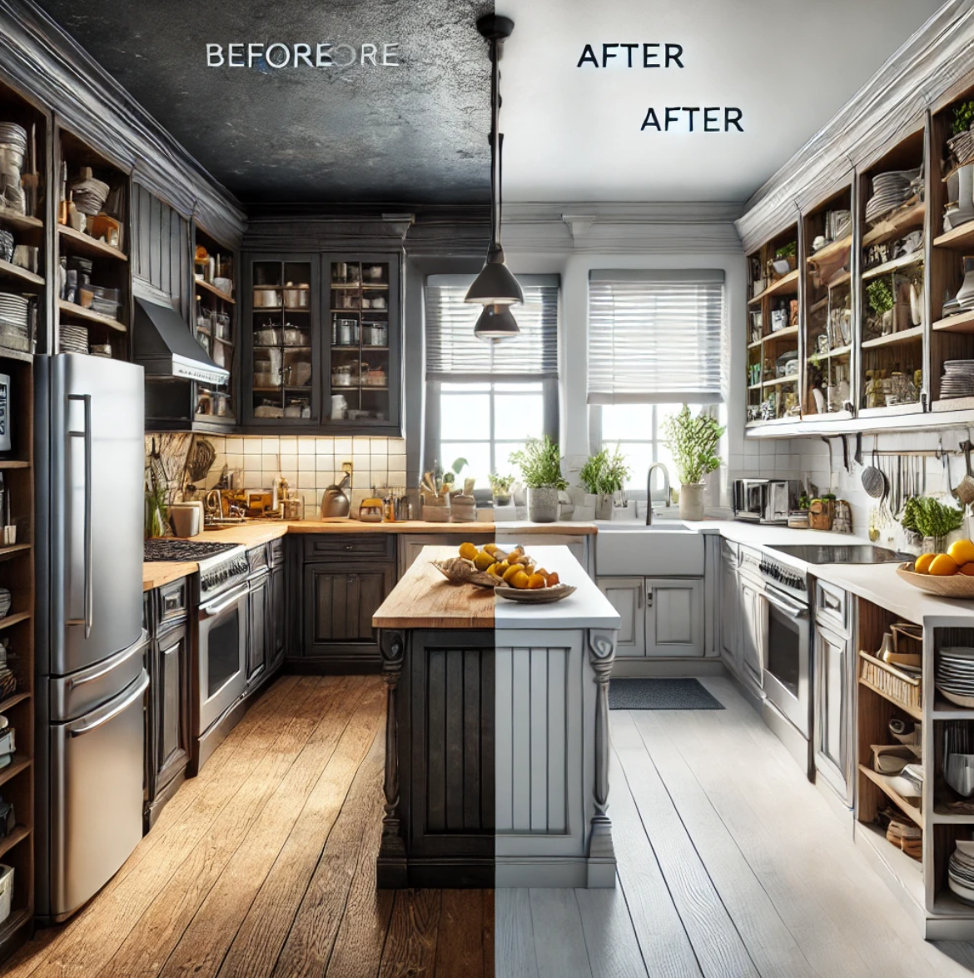
Remodeling your kitchen can bring numerous benefits:
- Increase Home Value: A well-designed kitchen remodel can significantly boost your home’s resale value. It’s one of the most impactful renovations you can undertake.
- Improve Functionality: A remodel allows you to redesign the kitchen layout to better suit your needs, adding more storage, improving traffic flow, and upgrading appliances.
- Enhance Aesthetics: Transforming your kitchen’s look can make it more inviting and reflective of your personal style, whether you prefer a modern, traditional, or eclectic design.
2. Planning Your Kitchen Remodel
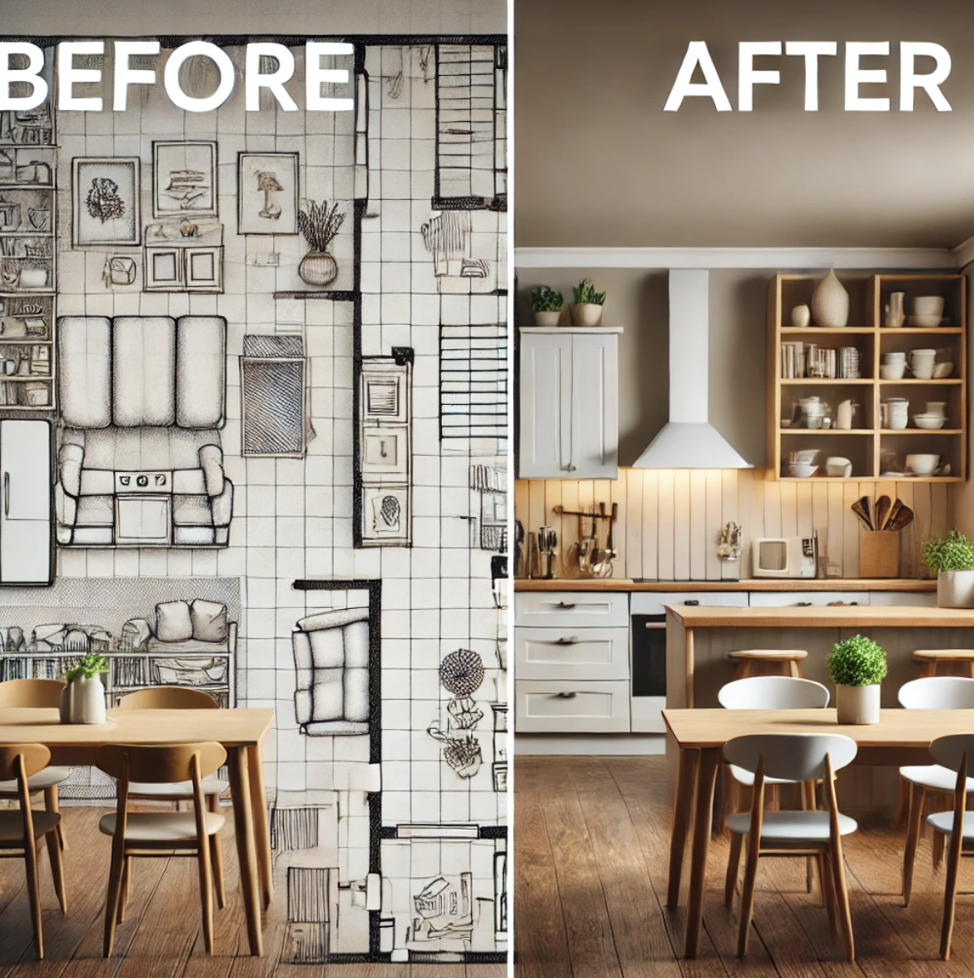
Effective planning is crucial for a successful kitchen remodel:
- Set a Budget: Determine how much you’re willing to spend. A clear budget helps guide decisions about materials, appliances, and labor.
- Assess Your Needs: Consider how you use your kitchen and what changes would improve its functionality. Do you need more counter space, better lighting, or a larger pantry?
- Gather Inspiration: Look for design ideas in magazines, websites, and social media. Create a vision board to help visualize your ideal kitchen.
- Hire Professionals: Depending on the project’s scope, you may need a kitchen designer, contractor, and possibly other specialists like electricians or plumbers.
3. Designing Your Dream Kitchen
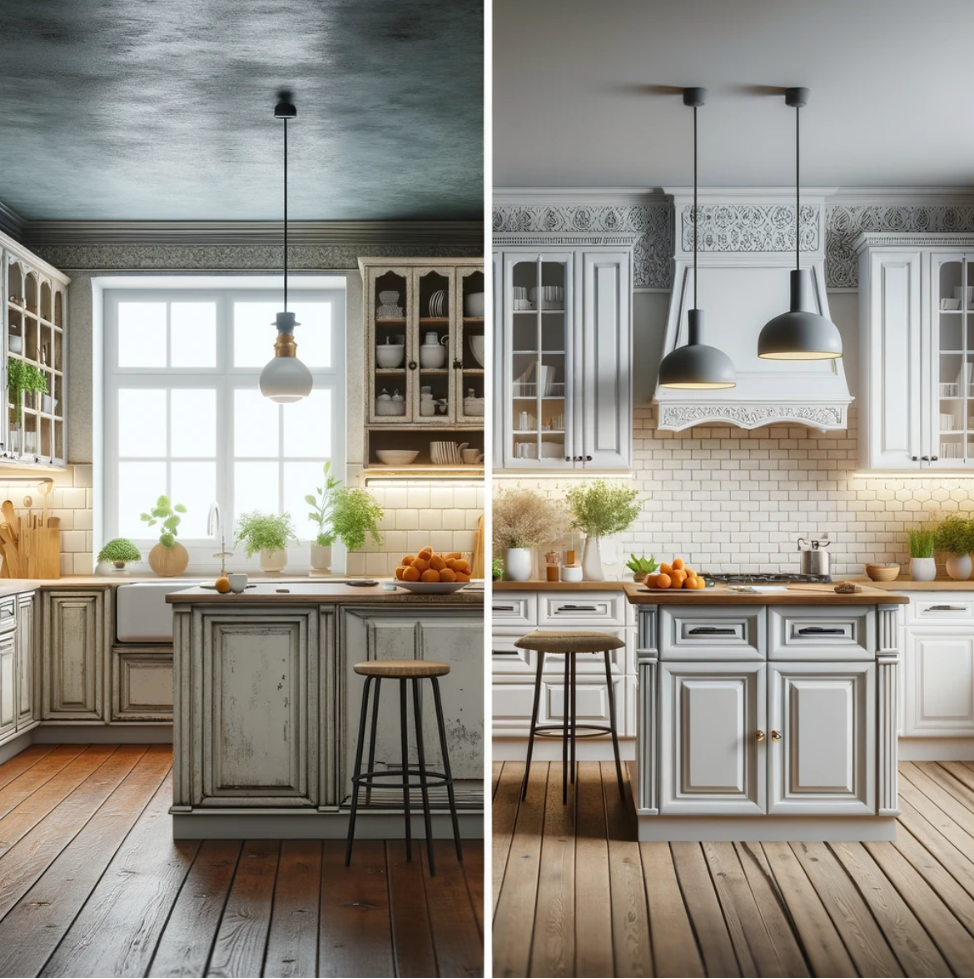
The design phase is where your ideas come to life:
- Choose a Layout: The kitchen layout should facilitate easy movement between the sink, stove, and refrigerator, often referred to as the “kitchen work triangle.” Popular layouts include U-shaped, L-shaped, and galley kitchens.
- Select Materials: Choose durable and attractive materials for countertops, cabinetry, and flooring. Granite, quartz, and marble are popular choices for countertops, while hardwood, tile, and vinyl are common for flooring.
- Pick Appliances: Consider energy-efficient appliances that fit your kitchen’s style and needs. Stainless steel remains a popular choice for its durability and sleek look.
- Lighting: Plan for a mix of task, ambient, and accent lighting. Under-cabinet lights, pendant lights, and recessed ceiling lights are effective options.
4. Executing the Remodel
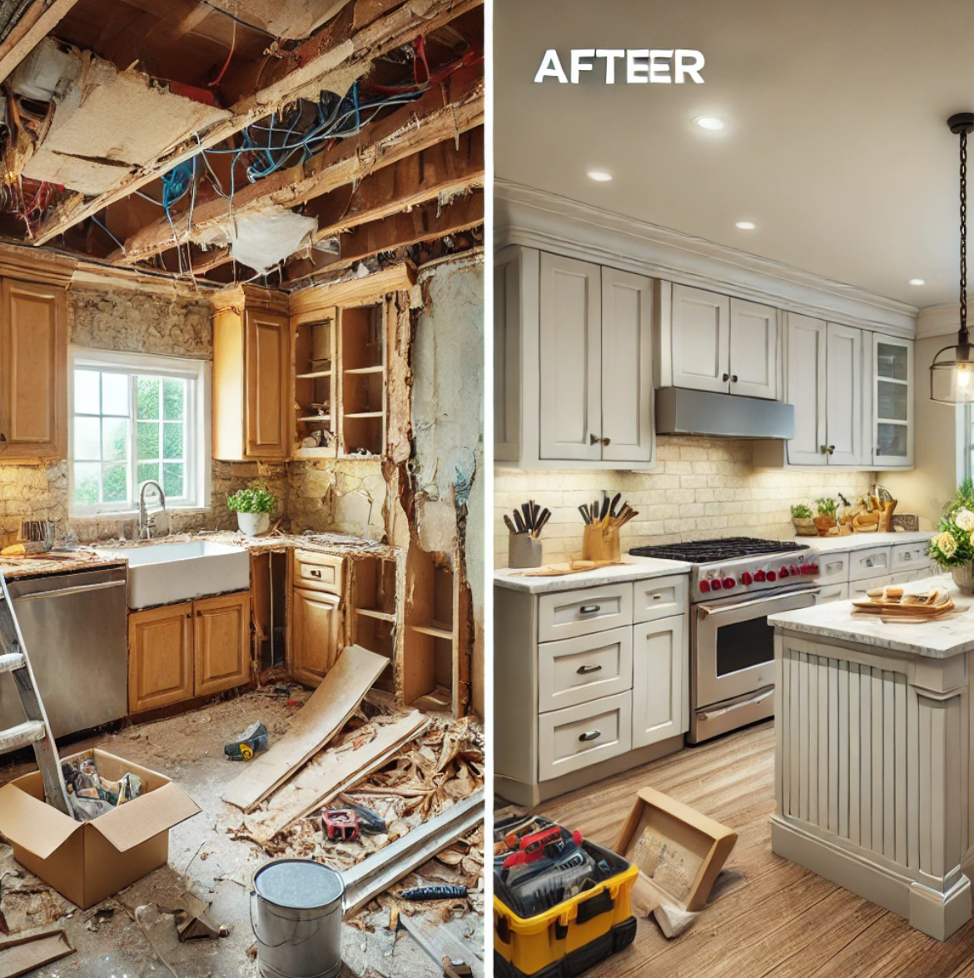
With a solid plan in place, it’s time to execute the remodel:
- Demolition: The first step involves removing old cabinets, appliances, and fixtures. Ensure proper disposal of materials.
- Plumbing and Electrical: Any changes to the layout will likely require adjustments to plumbing and electrical systems. Hire licensed professionals to handle these tasks.
- Installations: Begin installing cabinets, countertops, flooring, and new appliances. Ensure everything is level, properly aligned, and securely fastened.
- Finishing Touches: Add the final details, such as backsplash tiles, cabinet hardware, and paint. These elements bring the entire look together.
5. Tips for a Smooth Kitchen Remodel
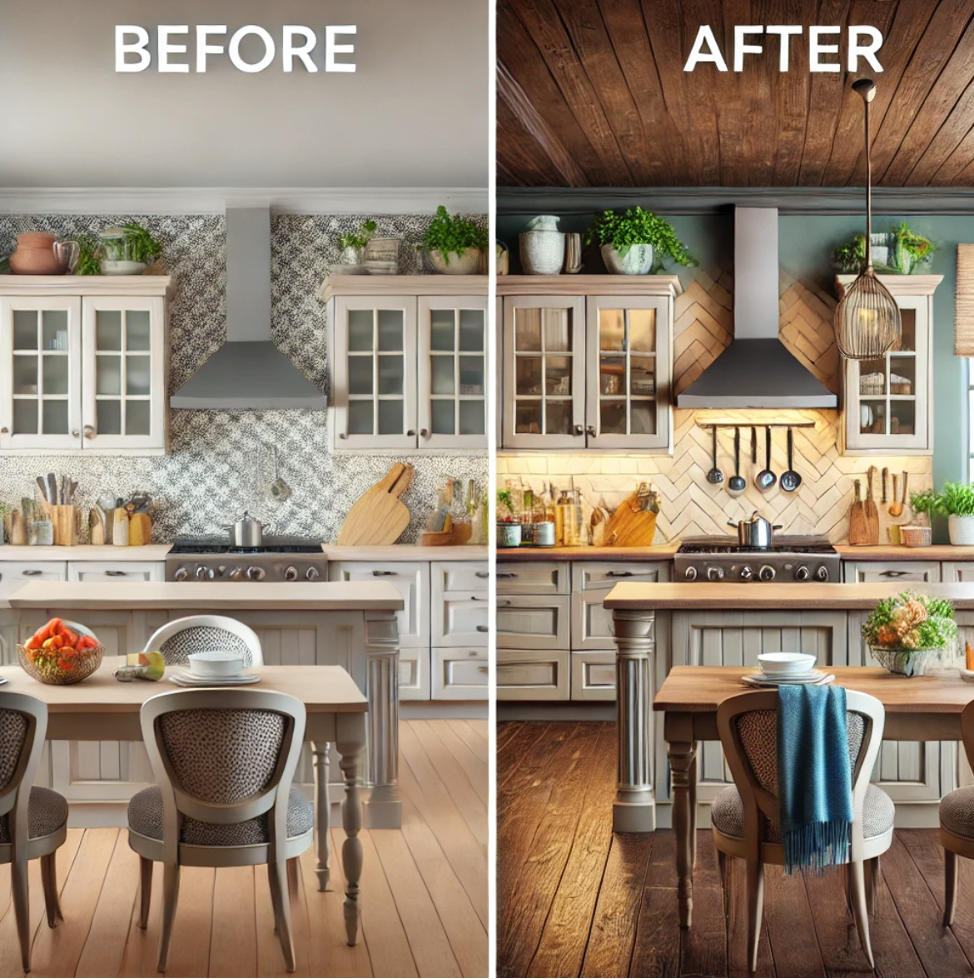
- Stay Organized: Keep track of your budget, schedule, and progress. Regular communication with your contractor ensures that everyone is on the same page.
- Expect the Unexpected: Be prepared for unforeseen issues, such as plumbing surprises or delays in material delivery. A contingency fund (about 10-20% of your budget) can help cover these unexpected costs.
- Prioritize Functionality: While aesthetics are important, ensure that your kitchen remains functional. Think about storage solutions, workflow, and ease of maintenance.
6. Post-Remodel Considerations
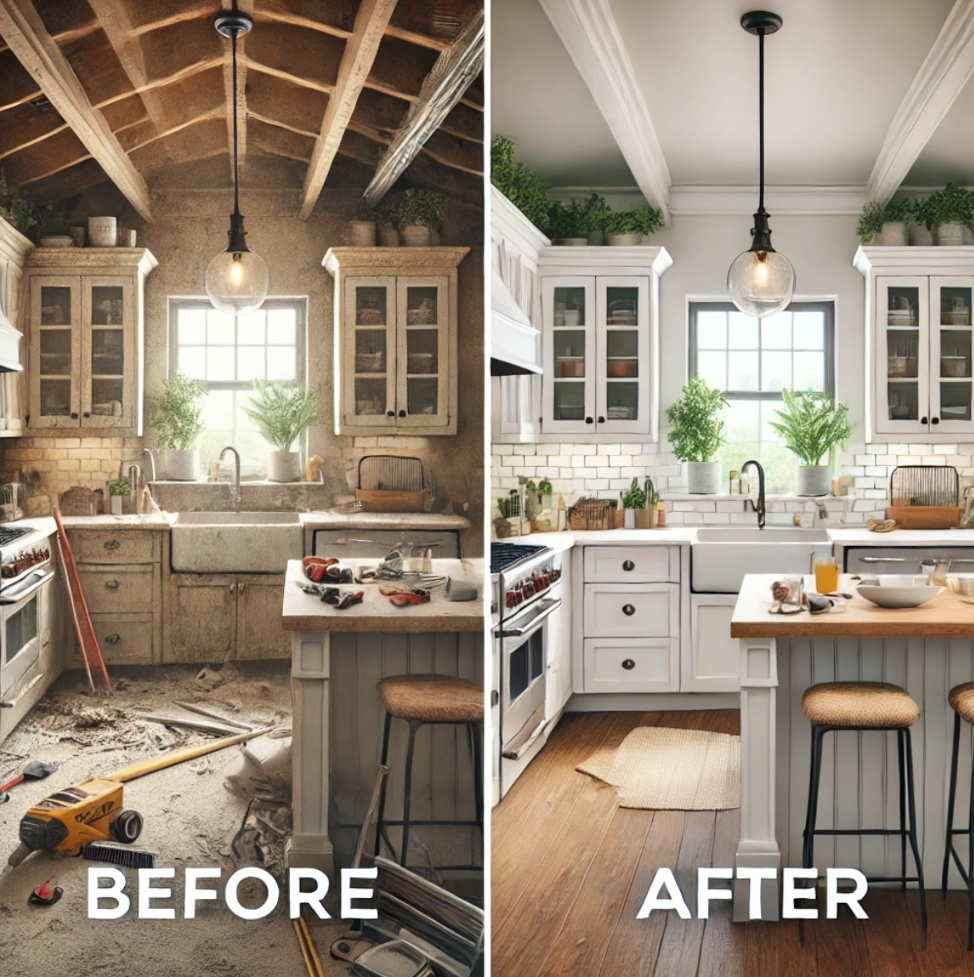
Once the remodel is complete, there are a few final steps:
- Inspection: Conduct a thorough inspection to ensure everything is installed correctly and meets your expectations.
- Clean-Up: A professional cleaning service can help remove dust and debris left from the construction process, making your kitchen move-in ready.
- Enjoy Your New Kitchen: Start using your new kitchen and enjoy the improved functionality and beauty of your space.
Conclusion
Kitchen remodeling is a rewarding project that can breathe new life into your home. By carefully planning and executing each step of the process, you can create a kitchen that not only meets your needs but also enhances your overall living experience. Whether you’re cooking a simple meal or hosting a dinner party, your newly remodeled kitchen will be a space where you can enjoy and create lasting memories.

